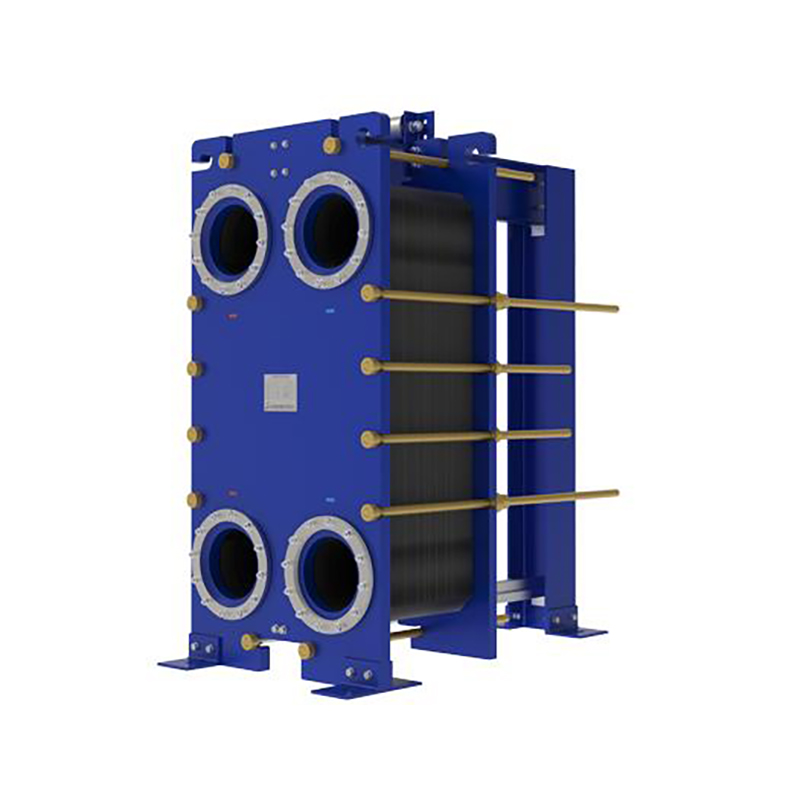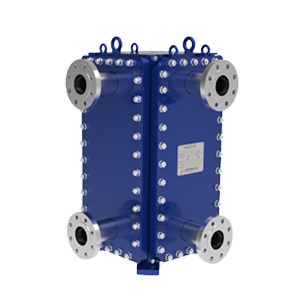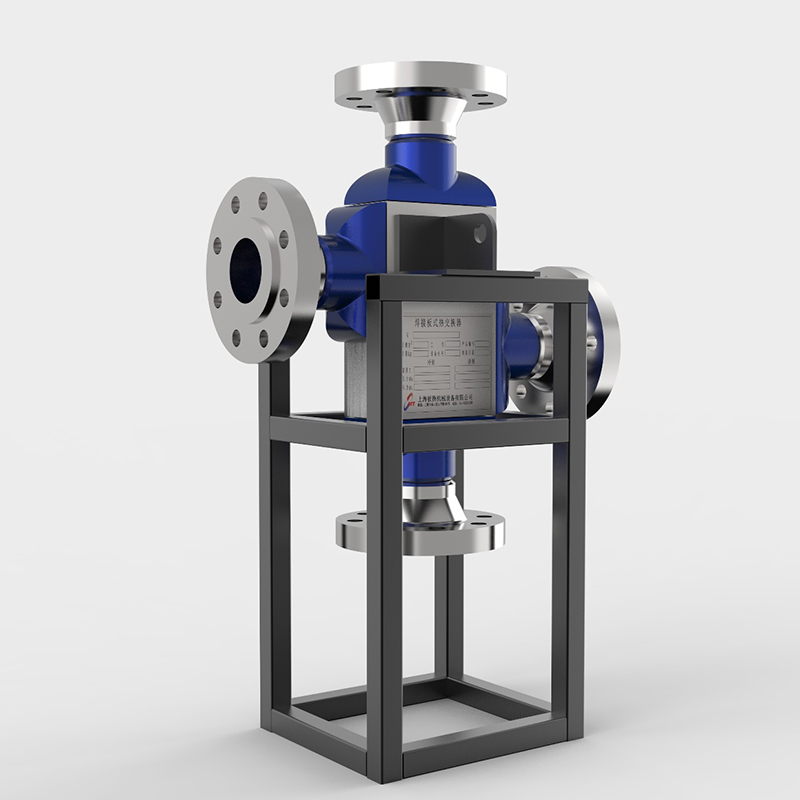5 key roles of plate heat exchanger gaskets.
Plate heat exchanger gaskets perform 5 key roles: ...
More
What is a Stainless Steel Coil Heat ExchangerA stainless steel coil heat exchanger is a device designed for efficient thermal energy transfer between two or more fluids without mixing them. At its core, it consists of a coiled tube, typically made from high-grade stainless steel alloys like 304 or 316, housed within a shell or another fluid container. The coil's design maximizes the surface area for heat transfer, making it exceptionally effective for a wide range of temperatures and pressures. This type of heat exchanger is distinct from plate or shell-and-tube variants due to its compact, continuous coil geometry, which offers superior resistance to thermal stress and pressure shocks. The primary function is to either heat a process fluid by a hotter medium or cool it by a colder one, serving as a critical component in systems where hygiene, corrosion resistance, and durability are non-negotiable. Its fundamental principle relies on conduction through the coil wall and convection from the fluids, making it a staple in industries from pharmaceuticals to food and beverage processing, chemical manufacturing, and HVAC systems. The choice of stainless steel, renowned for its strength and resistance to oxidation and corrosive elements, ensures longevity and reliability in harsh operational environments, preventing contamination and maintaining fluid purity throughout the heat transfer process.
Stainless steel coil heat exchangers are engineered for superior performance in the most challenging industrial and commercial settings. The selection of stainless steel, particularly grades 304 and 316, is pivotal due to their exceptional corrosion resistance, which is quantified by their chromium content (typically 18-20% for 304 and 16-18% for 316, with 316 also containing 2-3% molybdenum for enhanced resistance to chlorides). This material choice directly translates to a longer service life, often exceeding 15-20 years with proper maintenance, even when handling aggressive media like acids, brines, or high-purity water. The coil design itself is a marvel of thermal engineering. By winding the tube into a compact spiral, manufacturers dramatically increase the surface area-to-volume ratio compared to straight tubes. For instance, a standard coil might provide over 50% more surface area within the same footprint, a critical factor for applications where space is at a premium. This geometry also induces turbulent flow within the fluids at lower velocities, which significantly enhances the heat transfer coefficient—a key performance metric. Real-world data from industrial applications shows that these exchangers can achieve thermal efficiencies of 85-90% in liquid-to-liquid duties. Their operational pressure ratings are equally impressive, with standard models handling up to 150 psi (10 bar) and custom-designed coils capable of withstanding pressures exceeding 1000 psi (69 bar) for specialized processes in the oil and gas or power generation industries. The non-porous surface of stainless steel, with a typical surface roughness (Ra) of less than 0.8 micrometers, ensures that they meet strict hygienic standards (e.g., 3-A Sanitary Standards), preventing bacterial growth and making them ideal for pasteurization, sterilization, and clean-in-place (CIP) systems in food, dairy, and pharmaceutical production. This combination of durability, efficiency, and compliance makes it an indispensable asset for engineers focused on optimizing thermal management while minimizing maintenance and downtime.
The operation of a stainless steel coil heat exchanger is a practical application of fundamental thermodynamic principles, primarily conduction and convection. The process begins as two fluids at different temperatures enter the system. One fluid, known as the service fluid, flows through the coiled tube, while the second fluid, the process fluid, circulates around the exterior of this coil within the surrounding shell. The large surface area of the coiled tube facilitates efficient energy exchange. Thermal energy moves from the hotter fluid to the cooler one through the thin wall of the stainless steel coil. This metal wall acts as a conductive barrier, allowing heat to pass through while keeping the fluids completely separate. The efficiency of this transfer is heightened by the induced turbulent flow caused by the coil's curvature, which disrupts the boundary layer of fluid that typically insulates the tube wall and reduces heat transfer. In a heating application, for example, hot steam or thermal oil inside the coil would transfer its energy to a cooler liquid like water or a chemical solution on the shell side, raising its temperature. Conversely, for cooling, a cold refrigerant inside the coil would absorb unwanted heat from a warmer process liquid on the shell side. The temperature difference (ΔT or log mean temperature difference) between the two fluids is the primary driving force, and the system is designed to maximize this gradient throughout the entire length of the coil to ensure optimal and consistent heat transfer from inlet to outlet.
The working mechanism is defined by a counter-flow or cross-flow arrangement, with counter-flow being the most efficient for coil-in-shell designs. In this setup, the two fluids flow in opposite directions, which maintains a more consistent and favorable temperature difference across the entire length of the exchanger compared to parallel flow. This maximizes the thermal driving force (LMTD) and allows the outlet temperature of the process fluid to more closely approach the inlet temperature of the service fluid, leading to higher overall efficiency. The coiled path creates centrifugal forces that promote secondary flow and mixing (Dean vortices), which significantly enhances the convective heat transfer coefficient on the tube side by up to 40% compared to a straight tube under similar conditions. On the shell side, baffles are often installed to direct the flow across the coil, preventing stagnant zones and ensuring even fluid distribution, which improves shell-side heat transfer. The system's performance is quantifiable. For instance, the overall heat transfer coefficient (U-value) for a stainless steel coil exchanger handling water-to-water can range from 400 to 800 W/m²°C. The specific rate of heat transfer (Q) is calculated by the formula Q = U * A * ΔT_lm, where A is the surface area of the coil. A typical unit might have a coil with 50 square feet of surface area and, with a ΔT_lm of 50°F and a U-value of 100 BTU/(hr·ft²·°F), would transfer 250,000 BTU/hr. This efficient operation is managed with minimal maintenance, as the smooth stainless steel surface resists fouling, and the robust coil construction can handle thermal expansion and contraction without damage. Control systems, including temperature sensors and modulating valves, are integrated to regulate flow rates and maintain precise outlet temperatures, ensuring process stability and energy economy.
Select the most popular foreign trade service products to meet your diverse needs
Learn more about the dynamics and professional knowledge of the foreign trade industry

Plate heat exchanger gaskets perform 5 key roles: ...
More
A gasket in heat exchanger seals surfaces, blocks ...
MoreAPI 662 defines standards for plate heat exchanger...
More
You can see clear differences between welded block...
More
Ignoring a fouled heat exchanger causes high energ...
More
A heat exchanger's main parts include the heat tra...
MoreSelect the most popular foreign trade service products to meet your diverse needs
Explore more content related to foreign trade services

User Comments
Service Experience Sharing from Real Customers
Michael Rodriguez
Maintenance EngineerThis stainless steel coil heat exchanger is incredibly durable and efficient. It has significantly improved our process cooling with minimal maintenance required. The corrosion resistance is outstanding.
Sarah Chen
Plant ManagerExceptional performance and build quality. The heat exchanger handles high temperatures and pressures flawlessly, and the stainless steel construction ensures a long service life in our harsh environment.
David Kim
HVAC TechnicianA very reliable and compact unit. Perfect for space-limited applications. The heat transfer efficiency is excellent, and the stainless steel coil is easy to clean and maintain.
Jennifer Williams
Process EngineerWe've been using this heat exchanger for over a year now with zero issues. It's robust, highly efficient, and the stainless steel construction eliminates any contamination concerns in our pharmaceutical applications.